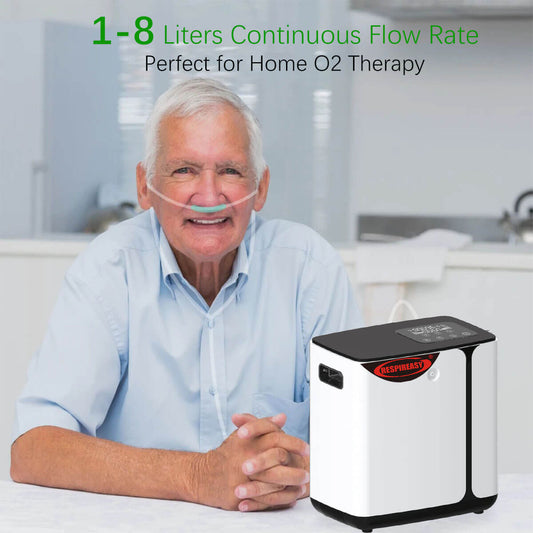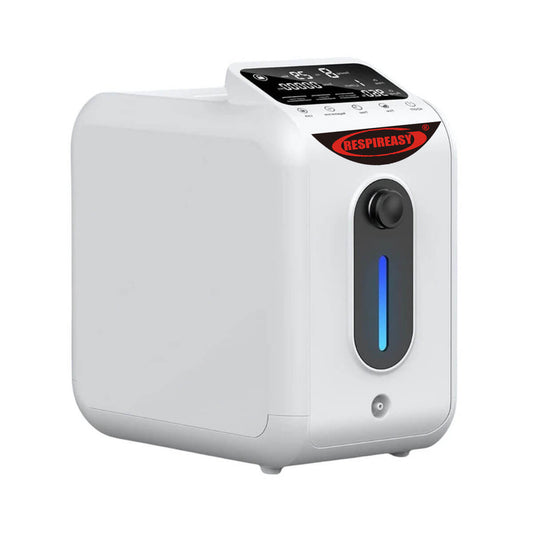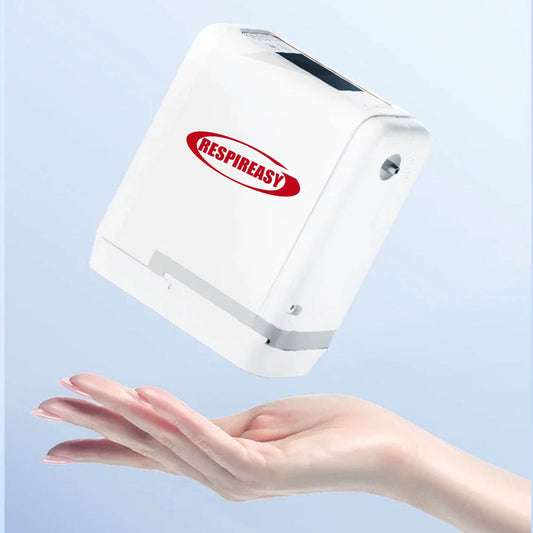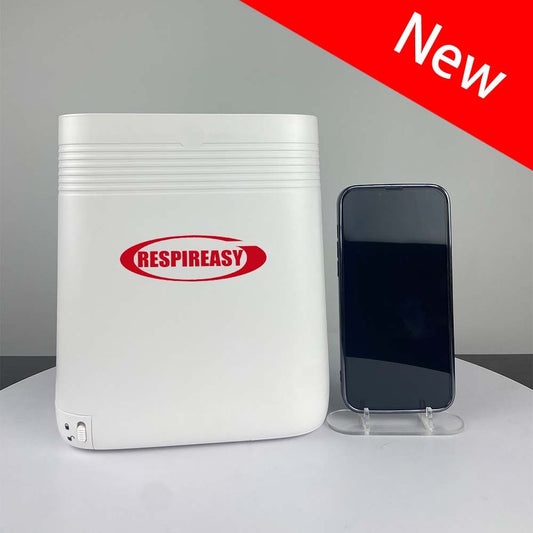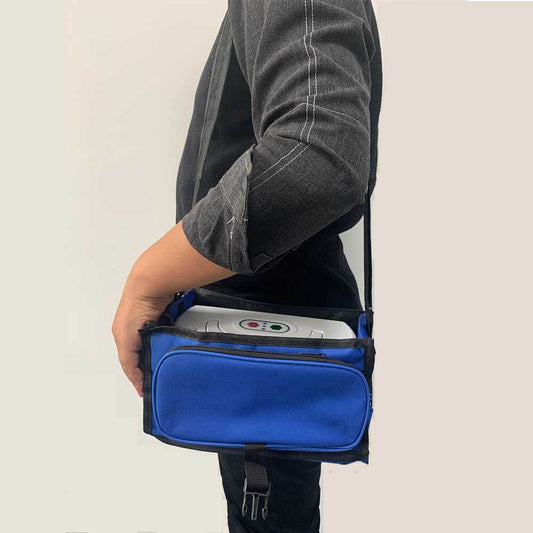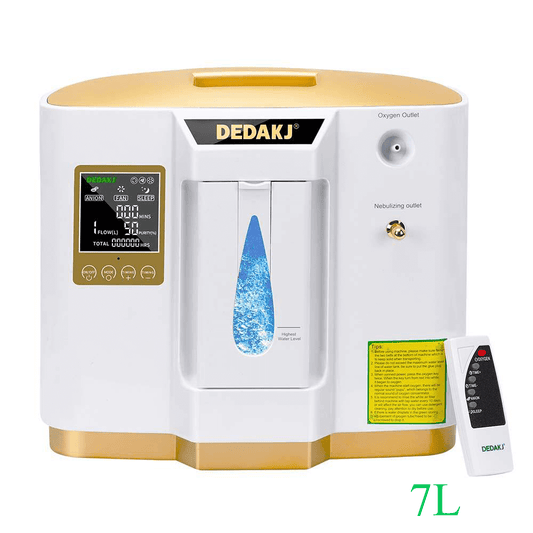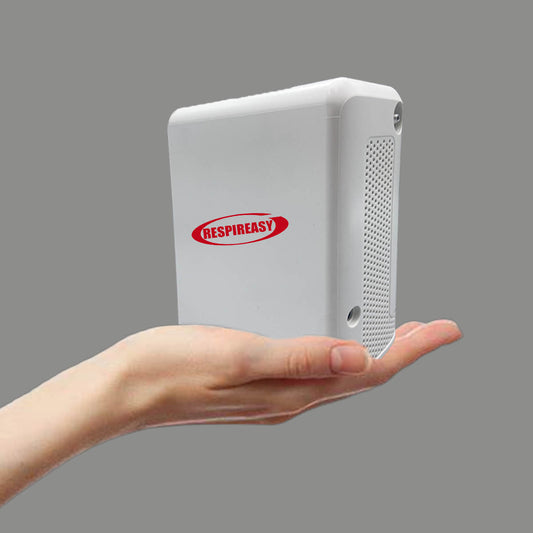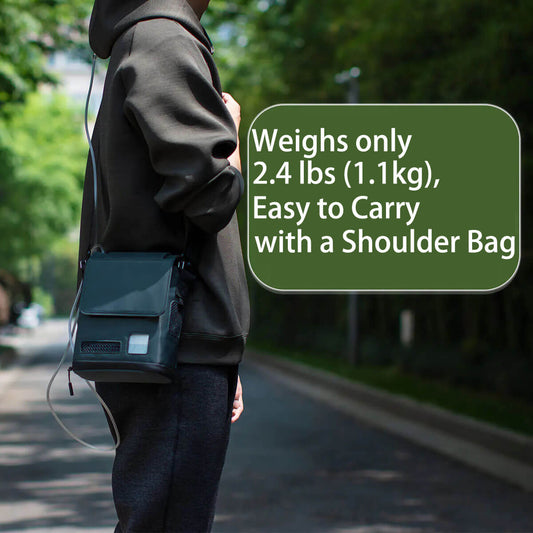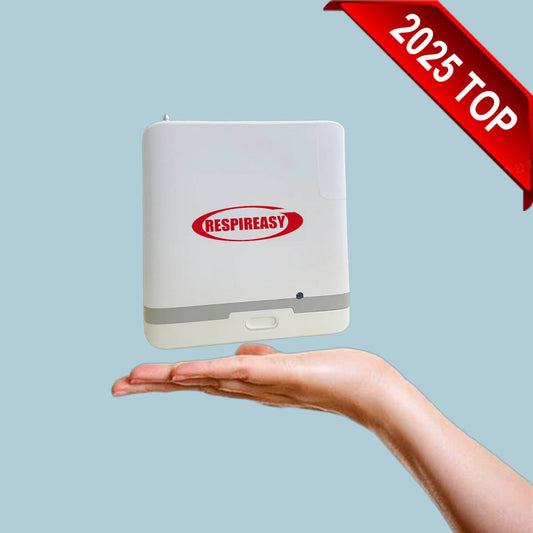Oxygen Therapy: Oxygen Delivery Devices and Accessories
Learn about the different types of home oxygen and the accessories you use for each.
The type of home oxygen delivery system that is right for you is based on how much oxygen you need, your lifestyle and insurance coverage. Your doctor will work with you to determine your needs for oxygen therapy and will likely prescribe a delivery system for home use and one to use when you are on the go.
Most Common Equipment and Accessories
 Home Oxygen Concentrator
Home Oxygen Concentrator
A home oxygen concentrator is a type of oxygen delivery device that draws in air from your surroundings, removes nitrogen and other gasses and delivers purified oxygen to the user. Home oxygen concentrators deliver oxygen continuously (at a steady rate) and need to be plugged into an electrical outlet to operate.
Portable Oxygen Concentrator (POC)
A plastic portable oxygen concentrator (POC) works in a similar way to a home concentrator, but it is much smaller and easier to take on the go. POCs are powered by being plugged into an outlet or using rechargeable batteries. POCs can deliver oxygen continuously (at a steady rate), but most POCs deliver oxygen through a pulse dose (in bursts). The burst of oxygen is delivered each time you inhale.
Compressed Oxygen
Compressed oxygen in a metal tank is a common oxygen delivery device. The tanks come in different sizes, but the smaller the tank, the less oxygen is in it. How much oxygen you need will determine the size of the tank your doctor prescribes. Some portable tanks are refillable by the patient, but some need to be returned to the oxygen supply company for refill. Gauges on the tank can be used to adjust the oxygen flow rate, which should be determined by your doctor.
Liquid Oxygen
Liquid oxygen is a type of oxygen delivery where oxygen is compressed and cooled to a point that it becomes frozen. Most liquid oxygen systems provide a high concentration oxygen and do not require any electricity to run. They usually consist of a stationary storage unit and a portable container. Liquid oxygen is very cold (-297° F) and can cause frostbite burns to the skin if not handled with care, especially when filling a portable tank.
Nasal Cannula
A nasal cannula is a lightweight tube with two hollow prongs that fit just inside the nose. It attaches to the oxygen tank or the humidifier bottle.
Facemask
A facemask covers the nose and mouth. Facemasks need to be set at a higher flow to prevent the build-up of carbon dioxide. Your doctor may prescribe a facemask instead of a nasal cannula if you require a higher oxygen concentration, extra humidity, or can’t tolerate a nasal cannula.
Humidifier
A humidifier is required for oxygen flows at over 4 liters per minutes (continuous). The type of humidifier you use will depend on your type of home oxygen and how much oxygen you need. A humidifier can help ease the nose and sinus dryness that can come with oxygen use. The humidifier should always remain level so water does not spill into the tubing.






























